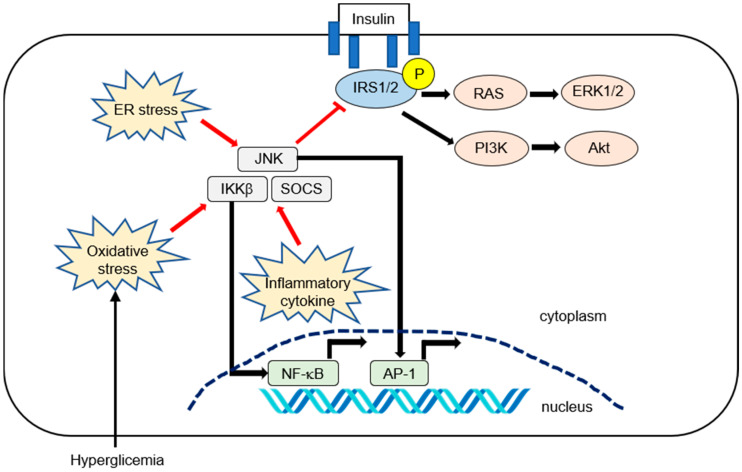Figure 1.
Summary of inflammatory pathways affecting hepatic insulin resistance (IR) in nonalcoholic fatty liver disease (NAFLD). Insulin activates its receptor, which results in tyrosine phosphorylation on the insulin receptor substrate (IRS1 and IRS2) and activation of downstream effector pathways, including the phosphatidylinositol 3-kinase (PI3K)-phosphoinositide-dependent kinase (PDK)-protein kinase B (AKT) and the RAS−extracellular-signal-regulated kinase (ERK) pathways (i.e., canonical IRS signaling). Numerous pro-inflammatory signaling or reactive oxygen species can activate IKK-β. The activated NF-kB is then translocated into the nucleus and binds to specific DNA response elements. Inflammatory cytokines such as IL-6 promote IR by inducing suppressor of cytokine signaling (SOCS) 1 and 3. SOCS1 and SOCS3 impair insulin signaling through ubiquitin-dependent degradation of IRS. The c-Jun N-terminal kinase (JNK, or mitogen-activated protein kinase) represents another important inhibitory kinase of IRS that is activated in response to a variety of extracellular stimuli and cellular stressors such as oxidative and endoplasmic reticulum (ER) stress.

